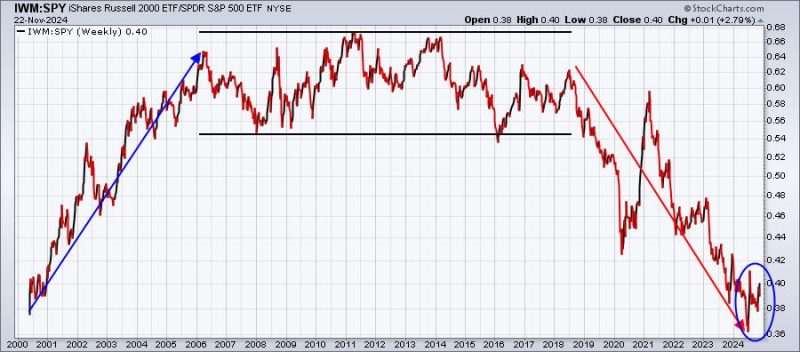Small and Mid-Caps Turning Lemons into Lemonade
1. The Impact of Market Uncertainty on Small and Mid-Cap Stocks
In times of market uncertainty, small and mid-cap stocks often experience higher levels of volatility compared to large-cap stocks. This is due to their smaller market capitalization, which can make them more susceptible to market swings and investor sentiment. However, this increased volatility can also present unique opportunities for savvy investors.
2. Contrarian Strategies in a Volatile Market
Contrarian investors are those who go against the prevailing market sentiment and seek out opportunities that others may be overlooking. In a volatile market, small and mid-cap stocks that have been unfairly punished by indiscriminate selling can present attractive buying opportunities for contrarian investors.
3. The Importance of Fundamental Analysis
When evaluating small and mid-cap stocks in a volatile market, fundamental analysis becomes even more crucial. Investors should carefully assess factors such as earnings growth potential, valuation metrics, and balance sheet strength to identify undervalued companies with strong growth prospects.
4. Leveraging Diversification to Mitigate Risk
Diversification is a key strategy for managing risk in small and mid-cap investments. By spreading investments across multiple companies and sectors, investors can reduce the impact of any single stock or industry downturn on their overall portfolio.
5. Staying Disciplined Amid Market Turbulence
During periods of heightened market volatility, it can be tempting to make impulsive investment decisions based on short-term price movements. Successful investors, however, maintain discipline and focus on their long-term investment goals, regardless of short-term market fluctuations.
6. The Role of Active Management in Small and Mid-Cap Investing
Active management plays a crucial role in navigating the unique opportunities and challenges present in small and mid-cap stocks. Skilled fund managers can leverage their expertise and research capabilities to identify high-potential companies and position portfolios for long-term success.
7. Harnessing Technology and Data Analytics
In today’s digital age, technology and data analytics have revolutionized the way investors analyze and select small and mid-cap stocks. By utilizing advanced tools and algorithms, investors can gain deeper insights into market trends, company performance, and risk factors to make more informed investment decisions.
8. Looking Ahead: Opportunities in Small and Mid-Cap Stocks
Despite the inherent risks associated with small and mid-cap investing, these stocks continue to offer compelling opportunities for investors seeking growth and alpha generation. By adopting a disciplined and research-driven approach, investors can turn market lemons into lemonade and capitalize on the unique potential of small and mid-cap stocks.
In conclusion, while small and mid-cap stocks may be more volatile than their large-cap counterparts, they also offer distinct advantages for investors willing to do their homework and take a contrarian approach. By leveraging fundamental analysis, diversification, discipline, active management, and technology-driven insights, investors can navigate market turbulence and uncover hidden gems in the small and mid-cap space.

